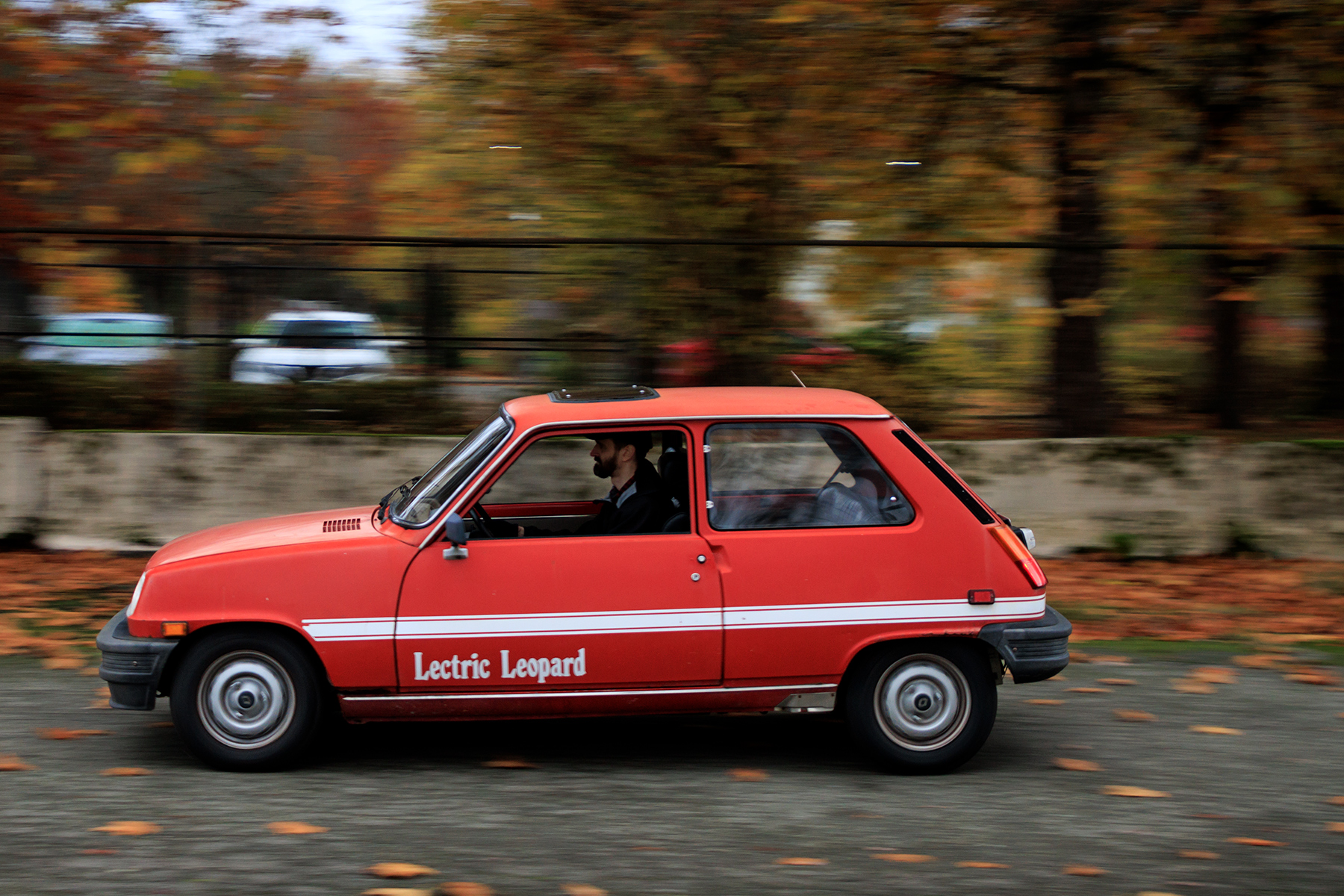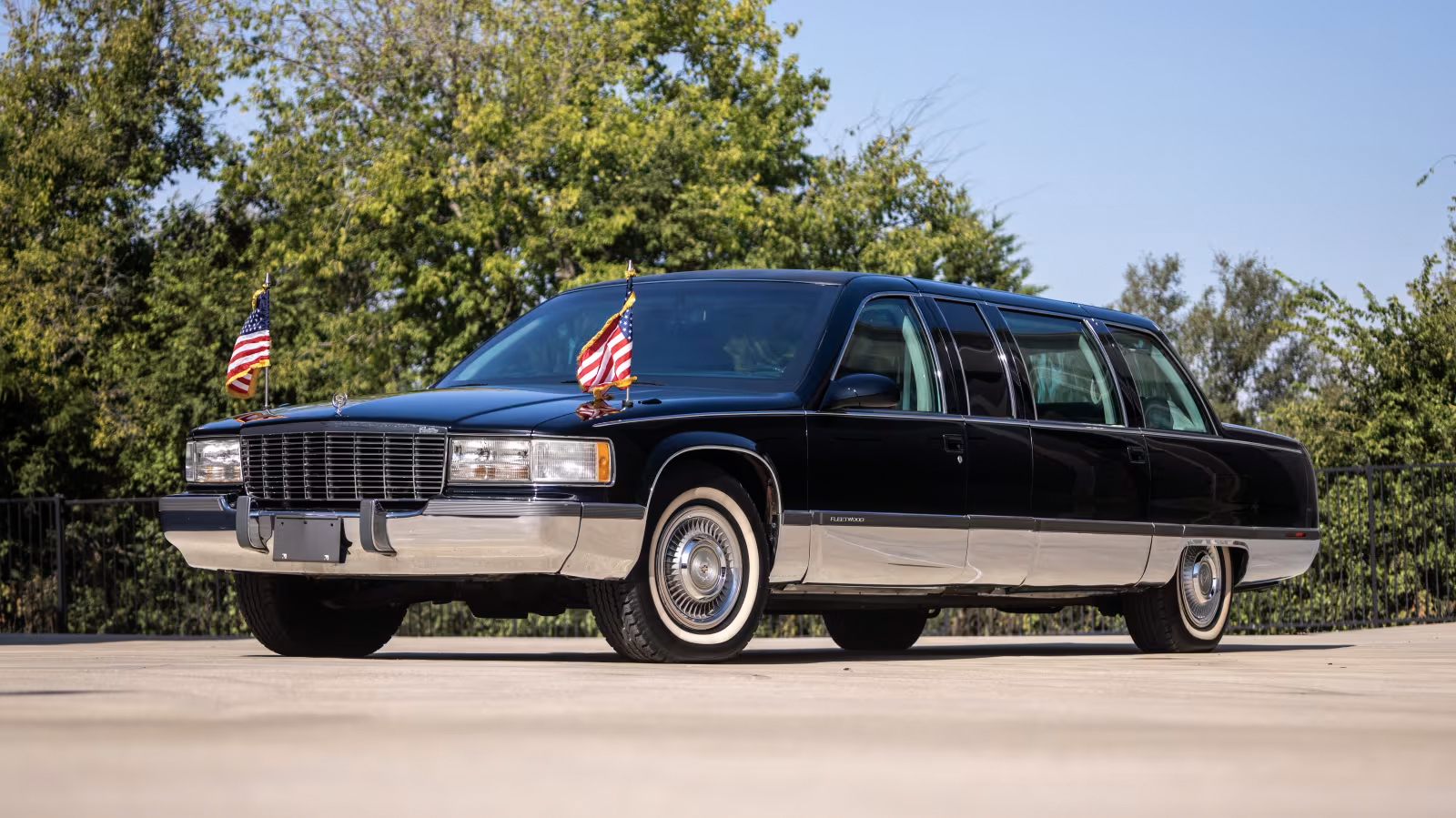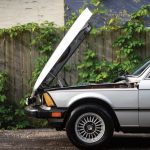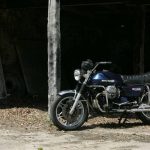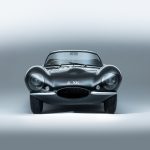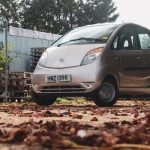A hundred years ago, in the sun-baked and forbidding loneliness of the Syrian desert, the bandits watched for prey. There, in the distance, a column of dust rising up from the dry and gravelly soil. Camel trains were easy pickings, and they sometimes carried smuggled gold. The men fussed with their ancient rifles and prepared to intercept. But something was off. The would-be quarry was approaching far too fast, there and gone again before the raiders had a chance. A convoy of Cadillacs, running hard at 70 mph, headed for Baghdad and too quick to catch.
In those early days of the 20th century, motorised transportation revolutionised the world, and nowhere did the change come more quickly than in desert warfare. Lawrence of Arabia had his Rolls-Royce Ghosts – “More valuable than rubies in the desert,” he wrote of them – raiding the Ottoman Empire’s supply lines and then vanishing back into the desert. But when the war was over and the League of Nations had carved up that empire, there was further work to be done.
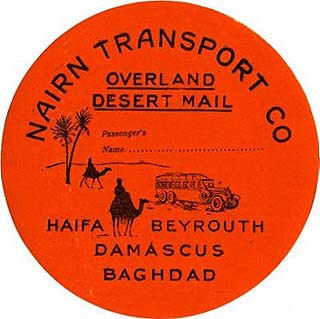
In Damascus, the French controlled Syria, linked via Beirut to the Mediterranean Sea. To the east, a British mandate held Iraq (then spelled Irak) and its capital, Baghdad. These were two of the most important cities in the Middle East, and there were no roads connecting them.
Baghdad in particular was a far-flung and lonely outpost for any fledgling British diplomat. Mail home to the UK was sent to a port on the Persian Gulf, then to Bombay in India, and up through the Suez Canal. It took an average of six weeks, meaning that it might be three months between writing a letter to your sweetheart and receiving the reply that she’d jilted you for Tim, who came from lots of money and only had to go over to Paris once a month.

Armoured Rolls-Royce Ghosts had crossed deserts before, notably in the lightning raid carried out by the Duke of Westminster in WWI. Crossing 120 miles of what is now Libya, the Duke’s raiding force of nine armoured cars destroyed a superior force and rescued two crews of British sailors that had been marooned and captured after a German U-boat attack.
Similarly, Field Marshal Edmund Allenby of the British Egyptian Expeditionary Force had used armoured Rollses to explore east of Beirut in 1919. However, he never went further than the ancient city of Palmyra, scarcely a quarter of the way to Baghdad.
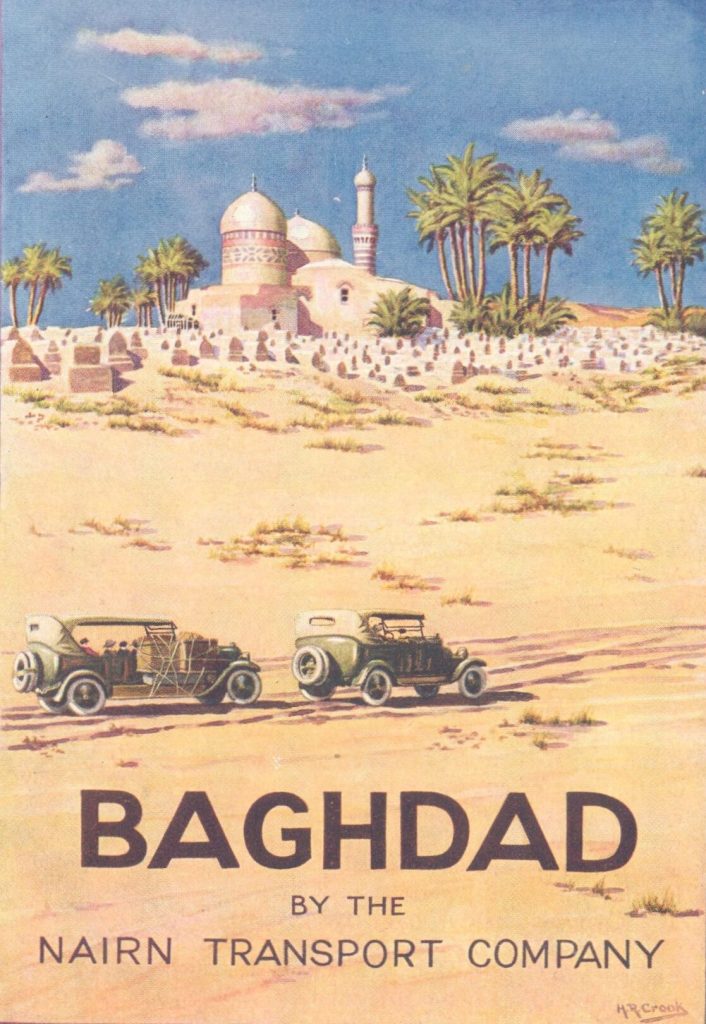
However, at this point in the story, two New Zealand-born brothers enter the picture. Both had served under Allenby in his motorized forces during WWI. They were experienced mechanics and entrepreneurs, and they even had the distinction of being the sons of the first person to own a car in New Zealand (for the historical trivia: it was a American REO).
Gerald and Norman Nairn stayed behind in the Middle East after being discharged from the British Army and set up a dealership. They knew that the automobile was going to change the way that the world worked, and there was a clear gap in the market in this part of the world. Besides which, owing to their connections at the army motor pool, they had a direct line on acquiring surplus military transportation as it was sold off.
Over the next two years, the brothers got rich quick, then lost it all. A depression in cotton prices saw the market for expensive luxuries like automobiles dry up. In late 1920, Norman and Gerry Nairn sold off what they could and briefly established a coastal taxi route running up to Beirut.
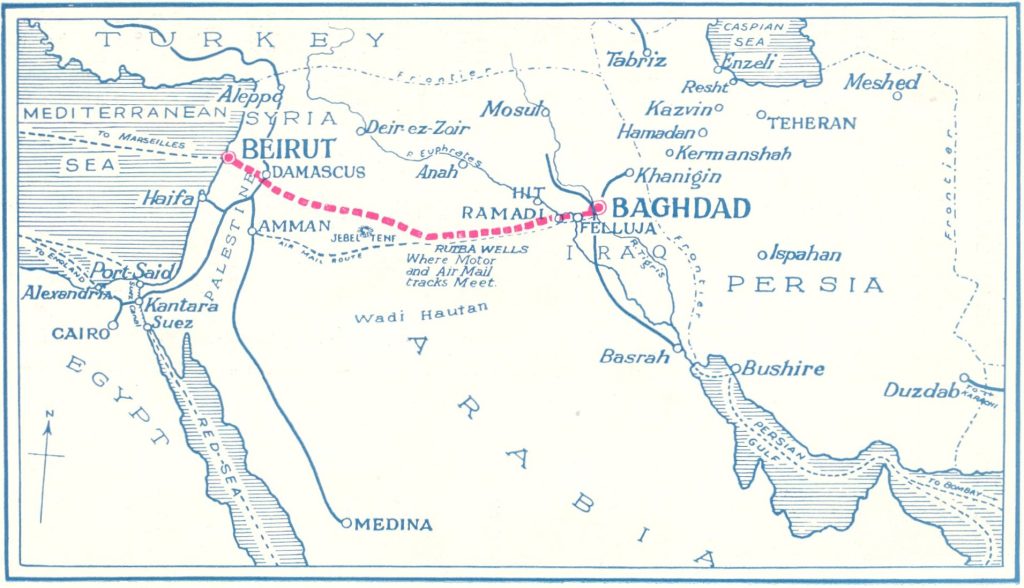
This effort was not a huge success but did get the attention of local officials. At the same time, a gold-smuggling sheik named Mohammad Ibn Bassam had contacted the British consul in Damascus with an idea. The sheik ran a surreptitious camel train between Damascus and Baghdad, paying off the bandits for protection along the way. But he thought cars could take that same route, including the entirely empty 500-mile stretch from Damascus to Ramadi, and cover it at great speed.
In 1923, the Nairn brothers assembled three cars – a six-cylinder Buick, an eight-cylinder Oldsmobile, and a Lancia – and outfitted them for a desert expedition. All three were loaded to the gills with tools and replacement parts, and a 10-day supply of food and water. Despite a late-night crash involving the Lancia, the trio covered the full 603-mile distance in just three days.
The next hurdle was convincing the very stubborn British High Commissioner of Irak that the crossing would be safe as a mail route. Eventually, with some assistance from Mohammad Ibn Bassam in bribing various bandits to leave the convoys alone, the Nairns had a contract for British mail from Baghdad to Haifa via Damascus. They began looking for the ideal desert-crossing machine, and that summer ordered a half-dozen seven-passenger Cadillac Type V-63 touring cars.
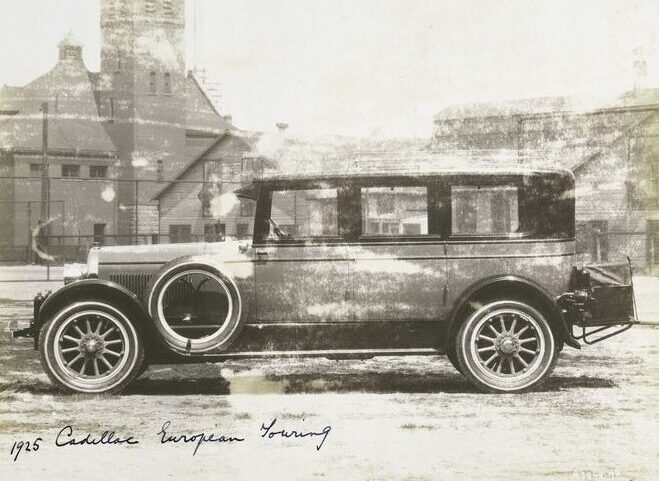
The V-63 may be thought of as the Escalade of its day, in that it was both luxurious and supremely capable. The 83-hp V8 offered nearly triple the power of the expedition’s Buick, and the spacious body and long wheelbase provided plenty of room for necessary modifications.
Not that there were many. The middle seats were removed, to be replaced by a 16-gallon water tank (there was no water for hundreds of miles along the route). Auxiliary fuel tanks were also mounted to each running board, linked with the main tank via a revolutionary-for-the-time electric fuel pump. Some of the cars carried onboard refrigerators and were equipped with spotlights to pierce the desert night during the overnight trips required in the scorching summer months.
Right out of the gate, the Nairns’ mail service was a runaway success. Possibly due to the suspicions of the High Commissioner, the mail contract carried built-in consequences. Any mail arriving in more than 60 hours after setting out would result in the Nairn brothers being fined. But it never happened; the Cadillacs ran like clockwork, to the point that years later the Swiss watchmaker Felca advertised a wristwatch as the Nairn company’s official timepiece.
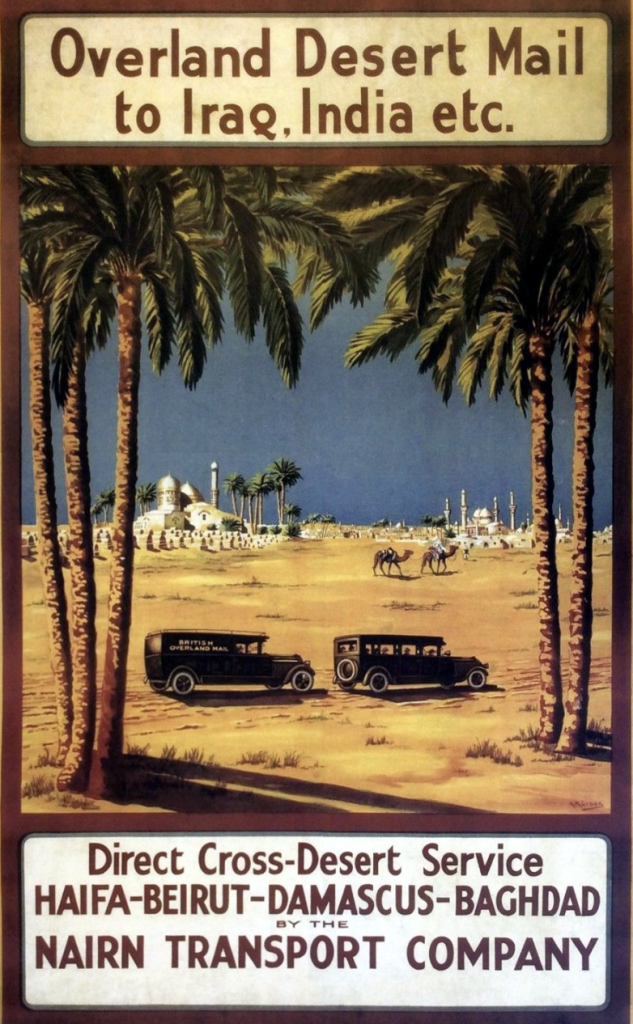
Which is not to say the crossings were boring. Despite the bribes, bandits did still sometimes give chase, though the convoys were armed and in at least once case chased down and captured the would-be robbers. The drivers were a collection of wild ex-pats, frequently having odd habits. One was a notorious drunk, hiding water bottles throughout the car, each one filled with Arak, the local anise-based liquor. Another had only one eye but used his Cadillac to chase down and shoot an Asiatic cheetah.
About 250 miles outside of Baghdad, vast mud flats were baked hard and smooth in the summer. Given even a light rain, however, they would become as slick as ice, and any driver swerving to avoid a suicidal impala would spin the car multiple times. Nairn drivers became so skilled and easy-going about the phenomenon that they would let the cars pirouette for a prolonged time, much to the chagrin of shocked passengers.
By 1927, the Nairn Transport Company had crossed the Syrian desert some 4,000 times, without the loss of a single passenger. The Cadillacs had been sniped at from time to time, and even held up at least once, but every one of them survived, occasionally limping in with plugged bullet holes in their radiators.
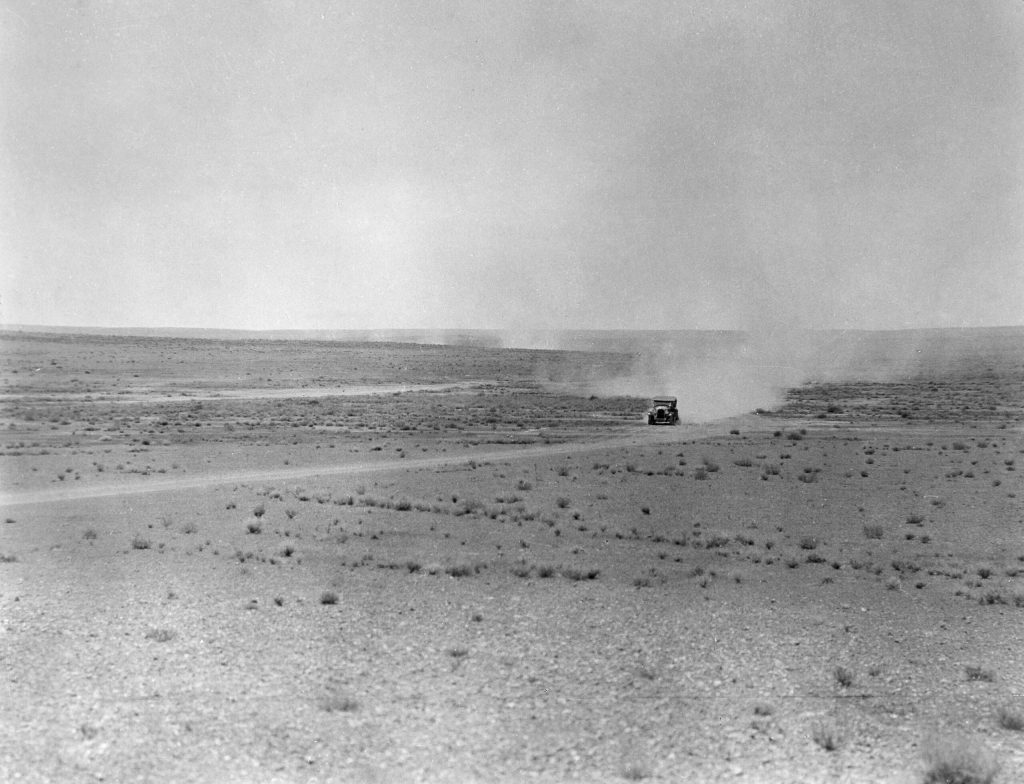
The route had shifted and continued to shift based on rebellions and changing political alliances, but Nairn Transport persisted right up until the 1950s. By that time, transportation was done by truck and bus, with huge articulated machines incorporating air-conditioning. The Nairns finally sold off their business in 1959.
But it was the Cadillacs on which the Nairn brothers had built a reputation and changed the nature of desert transportation. Speaking to Veteran and Vintage magazine more than 50 years ago, Gerald Nairn described selling off the last of the Cadillacs in the 1930s.
“When we finally sold them they had clocked about 200,000 miles each, with only two major overhauls,” he said. “The Cadillac’s ability to take punishment was just amazing, and nothing I have seen since surpasses them for that. It was the Cadillacs that made us. They were the toughest cars I have ever seen, and for overland conditions they were without question the finest car in the world.”


